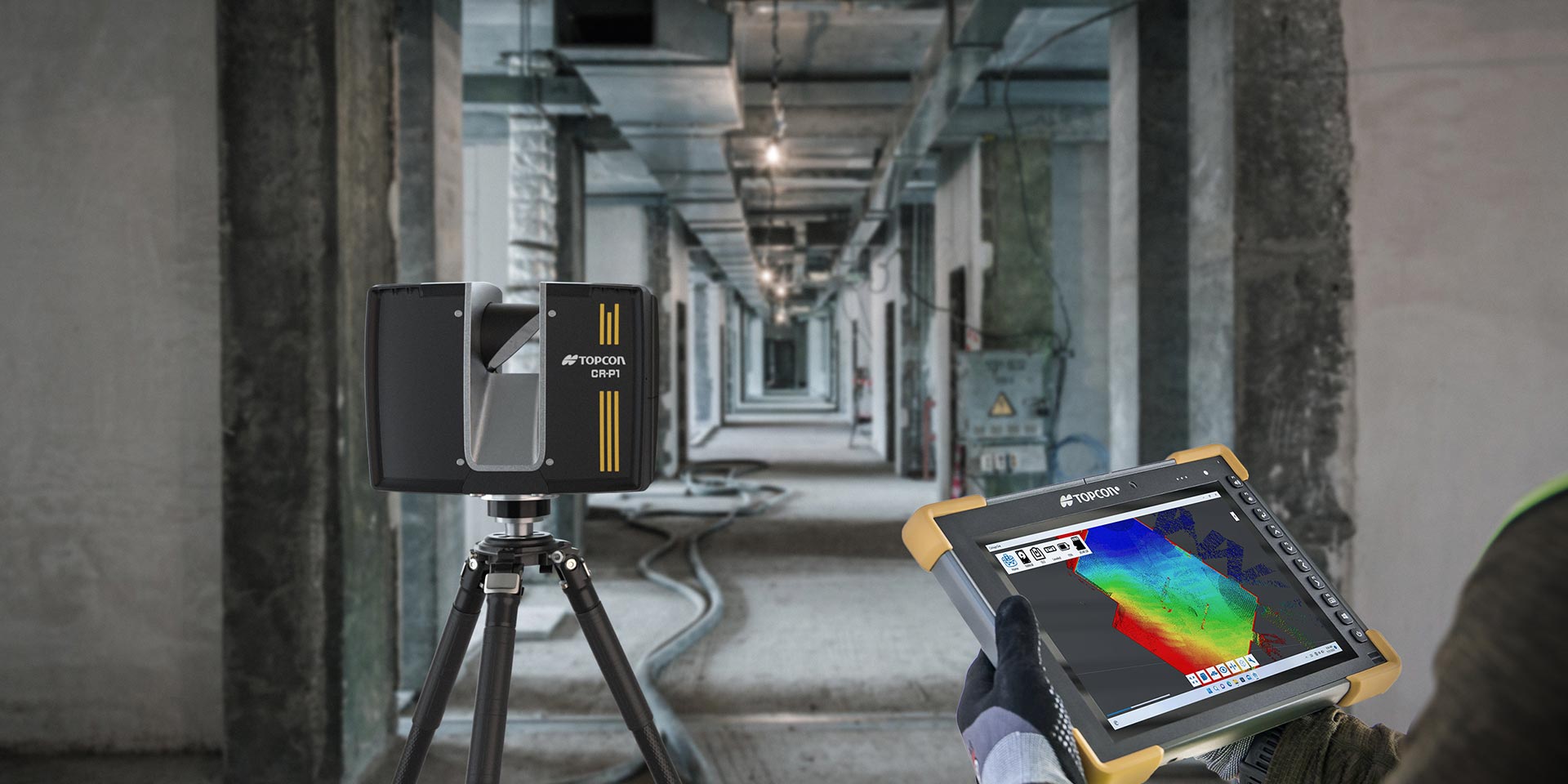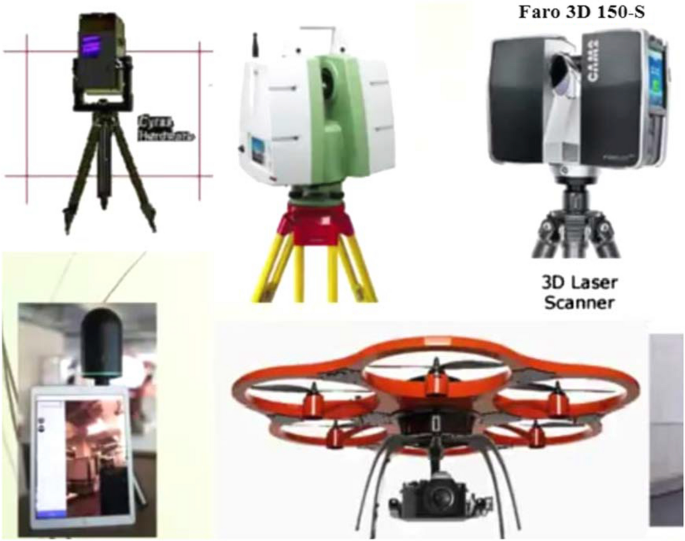The Future of Precision Measurement: Understanding the Role of 3D Laser Scanning Modern Technology
The landscape of precision measurement is evolving with the introduction of 3D laser scanning technology. This technology promises boosted precision and efficiency throughout different markets. As markets begin to embrace these innovations, the implications for job administration and implementation become significantly substantial. However, the transformative effects of this technology expand beyond simple numbers and dimensions, meaning a broader shift in exactly how experts approach their job. What might this imply for the future?
What Is 3D Laser Scanning Innovation?
3D laser scanning modern technology is a sophisticated method made use of to catch accurate three-dimensional dimensions of physical things and settings. This innovation makes use of laser light beams to gather information points, which are after that refined to create thorough electronic depictions of the scanned topics. By emitting hundreds of laser pulses per second, 3D laser scanners can properly tape the form, size, and spatial relationships of various surfaces.
The process commonly includes positioning the scanner at different viewpoint to catch comprehensive data. The resulting point cloud, a collection of millions of data points, can be assessed and exchanged 3D versions. Applications of this innovation span numerous areas, including heritage, engineering, and architecture preservation, where it assists in documentation and evaluation. As a non-intrusive technique, 3D laser scanning reduces disturbance to the setting, permitting comprehensive assessments of both existing frameworks and all-natural landscapes, thereby improving understanding and helping with notified decision-making.
Key Perks of 3D Laser Scanning in Numerous Industries
3D laser scanning modern technology offers considerable benefits throughout various industries by supplying enhanced precision and precision in measurements. This technology not only streamlines process yet additionally causes considerable time and expense financial savings. As organizations progressively adopt this cutting-edge strategy, the advantages end up being apparent in improved project end results and performances.
Boosted Accuracy and Precision
The integration of laser scanning innovation has transformed the method markets approach measurement and information collection. This modern technology provides an unprecedented degree of precision, recording numerous information factors in a solitary check. Because of this, experts throughout numerous fields, such as production, architecture, and engineering, can develop very described 3D designs that reflect real-world conditions. Boosted precision minimizes errors connected with standard measurement approaches, making sure that constructions and layouts are based on exact information. Additionally, the ability to capture detailed details permits far better evaluation and decision-making, inevitably causing improved results. By leveraging 3D laser scanning, sectors can achieve higher requirements of quality, making it a very useful tool for accurate measurements.
Time and Cost Effectiveness
Effectiveness in time and expense is a considerable advantage supplied by laser scanning innovation, transforming job implementation throughout different sectors. By rapidly capturing comprehensive 3D data, laser scanning minimizes the moment invested on hands-on dimensions and lessens the danger of errors. This swift information procurement helps with much faster decision-making and project timelines, allowing teams to allot sources better. In addition, the innovation reduces the need for rework, as precise versions lead to better preparation and execution. Industries such as building, architecture, and manufacturing benefit significantly, seeing reduced prices connected to labor and materials. On the whole, 3D laser scanning not just improves operational performance but additionally adds to significant savings, making it an important tool in today's affordable landscape.
Applications of 3D Laser Scanning in Architecture and Construction
As architectural and building and construction projects grow progressively complex, the fostering of laser scanning technology has actually become a transformative option. This innovation supplies specific dimensions and detailed 3D depictions of existing frameworks, facilitating more accurate planning and style procedures. Architects make use of 3D laser scanning to develop electronic versions that catch detailed information, ensuring that improvements and brand-new building and constructions straighten completely with existing problems.

The Function of 3D Laser Scanning in Manufacturing Processes
3D laser scanning plays a vital duty in producing processes by boosting high quality control with accurate dimensions and data collection. This technology allows makers to recognize inconsistencies early, decreasing errors and waste. In addition, it improves production process by assisting in much better interaction and sychronisation among teams.
Boosted Quality Assurance
Quality assurance in producing processes has actually been reinvented by the integration of laser scanning innovation. This ingenious technique permits specific dimensions and thorough examinations of components, making sure that they fulfill stringent top quality standards. 3D laser scanning records complex geometries and tolerances, making it possible for suppliers to discover deviations from design requirements swiftly. This technology considerably decreases human error related to conventional measurement approaches, supplying reliable and constant data. By promoting real-time quality assurance, it makes it possible for proactive changes in the manufacturing process, ultimately leading to enhanced item integrity and client check these guys out fulfillment. As sectors significantly adopt 3D laser scanning, the possibility for improved quality control becomes apparent, marking a transformative shift in producing methods.
Structured Manufacturing Workflow
Effective production operations are significantly taking advantage of the integration of laser scanning innovation in making procedures. This modern technology allows for quick, precise dimensions of components and settings up, substantially reducing the moment required for arrangement and modifications. By capturing accurate geometry, suppliers can quickly identify disparities between design requirements and actual products, allowing instant corrective activities. On top of that, 3D laser scanning facilitates the smooth transfer of information between layout and manufacturing teams, boosting cooperation and reducing errors. The technology likewise supports digital double creation, enabling real-time monitoring and optimization of making procedures. As an outcome, organizations can attain greater performance, lowered waste, and boosted total efficiency, eventually driving competitive benefit in the industry.
Protecting Heritage: How 3D Laser Scanning Aids Cultural Preservation
As cultural heritage sites deal with the hazard of deterioration and destruction, cutting-edge innovations such as laser scanning arise as important devices for preservation initiatives. 3D laser scanning records intricate details of historic structures and artefacts with remarkable precision, developing electronic models that offer several purposes in conservation. These designs enable for exact documents of present problems, making it possible for professionals to check changes gradually and assess deterioration risks.
In addition, laser scanning promotes digital restoration, assisting conservators develop prepare for repair work or recreating lost aspects without invasive methods. The modern technology also helps in informing the public, providing immersive experiences through virtual tours that highlight the relevance of these sites. By incorporating 3D laser scanning right into cultural preservation methods, stakeholders can ensure that heritage is protected for future generations while improving understanding and recognition of historic contexts.
The Future Outlook: Advancements and Fads in 3D Laser Scanning Modern Technology
3D laser scanning innovation has actually already changed various industries, its future pledges also higher innovations that will boost accessibility, precision, and rate. Arising patterns suggest a rise in integration with artificial knowledge and equipment discovering, causing smarter data handling and evaluation capabilities. This harmony will make it possible for quicker decision-making and even more specific end results in fields such as engineering, building and construction, and heritage preservation.
Developments in equipment are expected to produce lighter, much more portable scanning devices, democratizing accessibility for smaller sized firms and private professionals. As software remains to progress, easy to use applications will certainly streamline intricate operations, making 3D scanning more obtainable to non-experts
The surge of cloud-based solutions will certainly facilitate real-time collaboration and data Home Page sharing amongst stakeholders, leading the way for structured task management. Jointly, these fads signal a future where 3D laser scanning modern technology ends up being a necessary device in an also more comprehensive spectrum of applications.
Frequently Asked Concerns
Just How Much Does 3D Laser Scanning Innovation Expense?

What Are the Abilities Required to Operate 3D Laser Scanners?
Running 3D laser scanners needs technological proficiency, interest to detail, spatial awareness, understanding of software application for information processing, and an understanding of evaluating principles. Additionally, solid logical abilities and analytic capacities are vital for reliable operation.
Can 3D Laser Scanning Integrate With Various Other Technologies?
Yes, 3D this post laser scanning can integrate perfectly with various other modern technologies, such as Geographic Details Solution (GIS), Structure Info Modeling (BIM), and increased reality, boosting data accuracy and promoting better analysis throughout different markets and applications. - 3D Scanning
What Is the Typical Scanning Series Of These Gadgets?
The normal scanning variety of 3D laser scanning tools varies commonly, normally between 50 meters to over 1,000 meters, depending upon the model and application, affecting their viability for various precision measurement jobs and settings.
The length of time Does a 3D Laser Scanning Job Take?
A 3D laser scanning job usually takes anywhere from a few hours to a number of days, depending on factors such as project size, complexity, and needed information. Each project's timeline can differ substantially based on these elements.
The landscape of precision measurement is advancing with the introduction of 3D laser scanning technology. 3D laser scanning innovation is a sophisticated approach used to catch precise three-dimensional dimensions of physical items and environments. 3D laser scanning technology uses significant advantages across different industries by providing boosted accuracy and precision in measurements. 3D laser scanning modern technology has already transformed various industries, its future pledges even better developments that will certainly improve accuracy, accessibility, and speed. 3D laser scanning modern technology normally costs between $10,000 and $100,000, depending on the devices's attributes and capabilities.